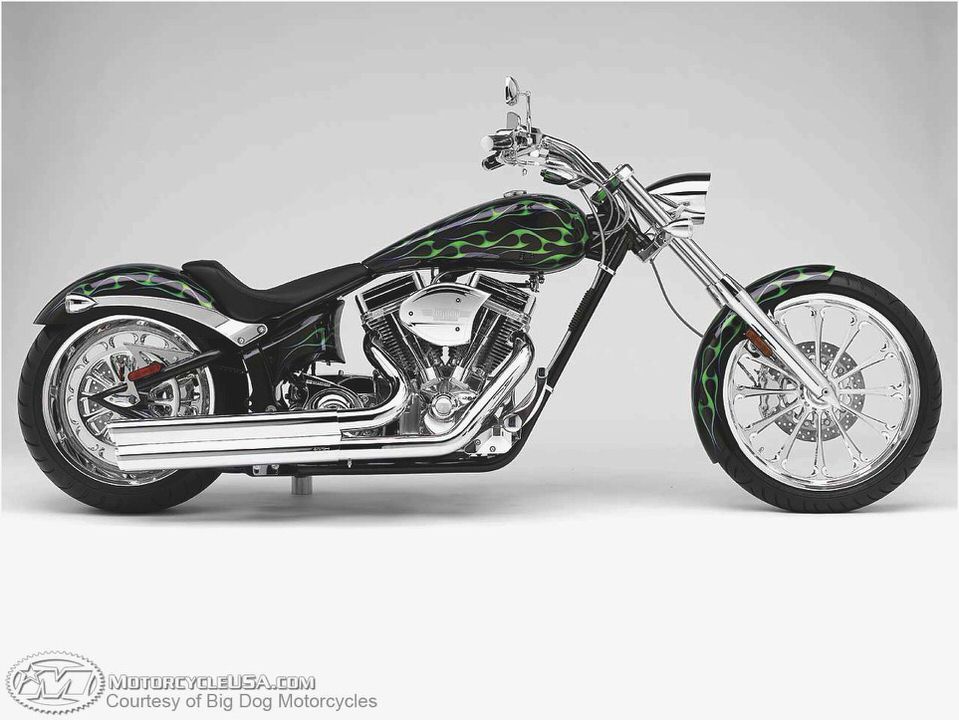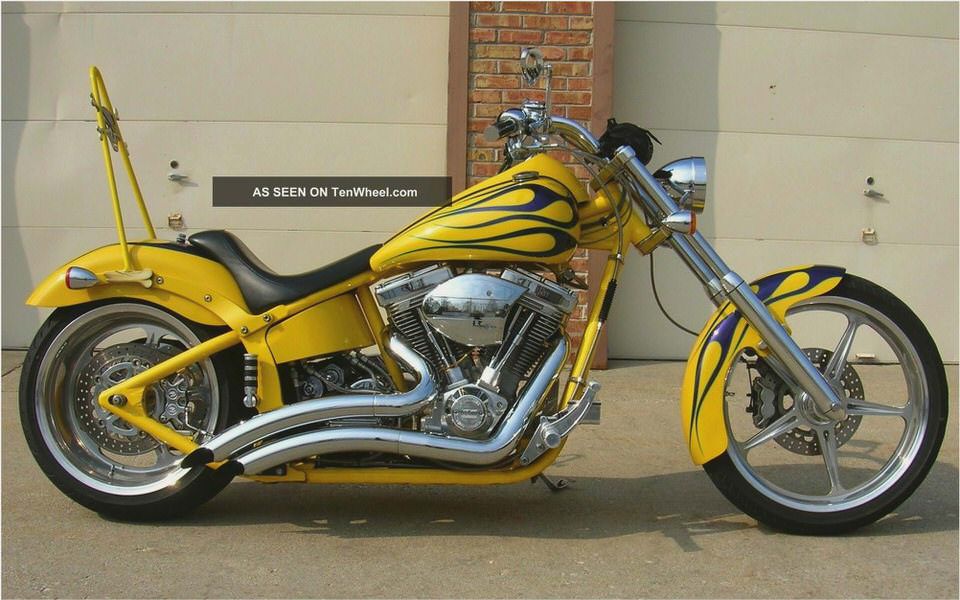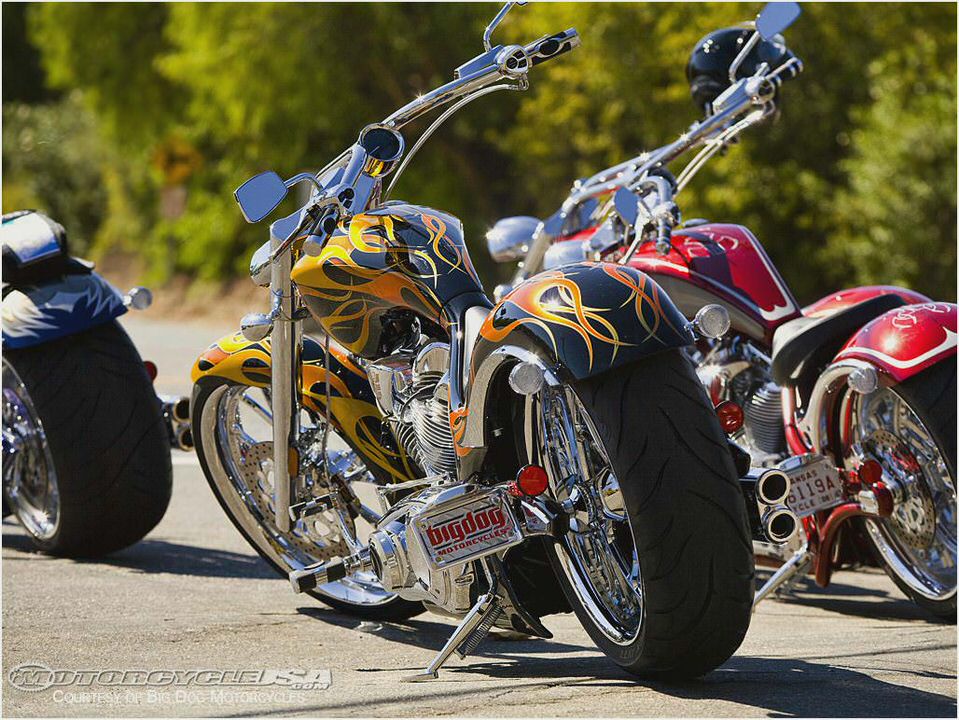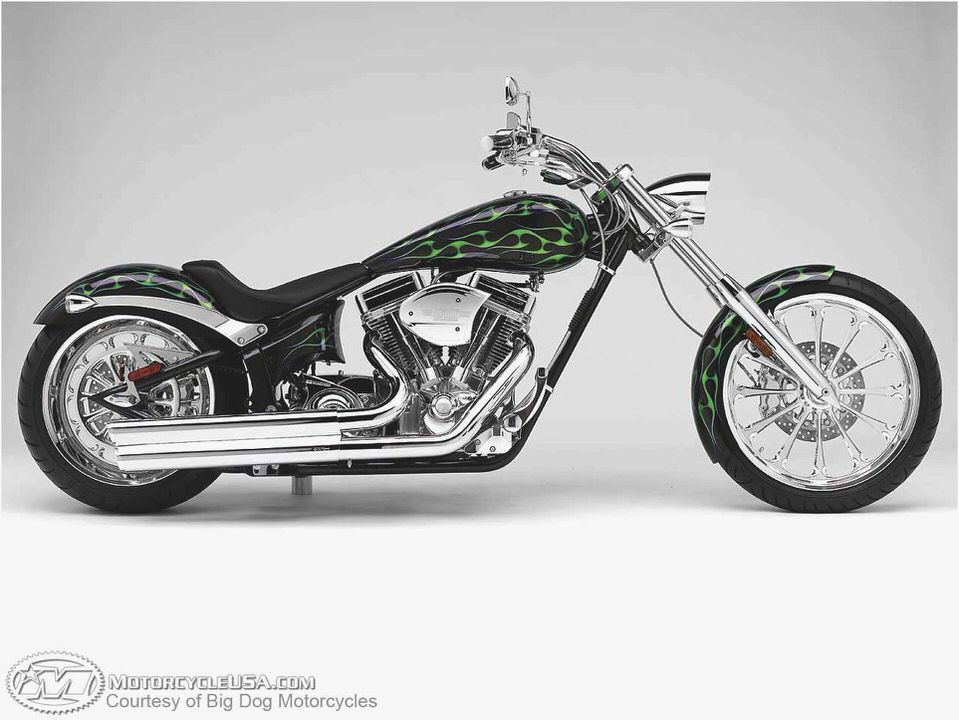

0606_hbkp_05_z+mastiff+.jpg
As we left Daytona’s ’05 Biketoberfest, we made a detour on our way home, stopping in Wichita, KA, the home of the Big Dog Motorcycle Company. Our reason for the stop was to check out Big Dog’s manufacturing facility to see just how they manage to manufacture somewhere in the vicinity of 5,000 motorcycles a year. We also timed our trip to coincide with Big Dog’s annual Tech Summit, which gave us a good opportunity to sit down and talk with quite a few of Big Dog’s authorized service-center personnel, as well as many folks on the sales and management team.
In our April issue, we ran an article where we followed a motorcycle through Big Dog’s assembly line. The bike you see here is the end result of that article.
The Mastiff is one of five models offered by Big Dog for the ’06 model year. While the Mastiff has been around since 2001, ’06 proved to be the year that redefined the motorcycle from previous models. In an effort to stay on the cutting edge of motorcycle styling, the new Mastiff has been geared more toward the long and low Pro-Street style of bikes (as has the Pitbull), while the remainder of the models are more in line with chopper styling.
The Mastiff’s frame has been totally redesigned from previous models. The in-house manufactured frame boasts a 6-inch backbone stretch and stock-length downtubes. Also manufactured in-house is the A-frame swingarm designed to cradle the Avon 250/40-18 rear tire.
This is no doubt in response to customers looking for more and more rubber out back. Of the four other models Big Dog produces, only the Chopper shares the 250mm rear tire, while all the others wear a 300mm tire. Both the frame and swingarm are coated with a heavy protective layer of powdercoat.
Leveling out the front of the bike is a 41mm frontend comprised of 2-inch-over tubes and a set of 3-degree raked triple-trees, which hang from a 39-degree raked neck. Providing a good contact patch with the asphalt is an MH120/70/21 Avon tire, designed to work well with the 250 out back. Providing cushioning at the rear of the bike is a pair of manually adjustable shocks.
Powering the Mastiff is an SS; 117-inch, overhead-valve, air-cooled, 45-degree V-Twin engine. Big Dog has worked closely with SS; over the years. This relationship has culminated in an engine design that includes a proprietary cam design, Super G carburetor, electronic compression releases, and a specially designed fin on the heads and cylinders that not only aids in cooling but also results in less high-frequency noise emanating from the engine.
All of the SS; powerplants for ’06 are assembled at Big Dog’s Wichita plant.
Located just behind the engine is what Big Dog calls its balanced drive system (BDS), which consists of a wet-chain primary and clutch setup that relocates the starter from its traditional position and places it down and farther back. In addition to the primary, another major component of the BDS is a Baker six-speed right-side-drive transmission. The result of all these components working in conjunction with one another is a narrower, more centered and balanced drivetrain.
Final drive consists of a 1-1/8-inch carbon-fiber belt running on a pair of hard-anodized, Teflon-coated pulleys.
Sheetmetal for the Mastiff consists of a pair of steel fenders and a long, flowing, one-piece gas tank complete with a single filler and a nice touch in the way of a paint-saver screwed into the tank’s bung. What appears to be an oil tank is actually an enclosure for the bike’s battery and electronics. So where’s the oil stored, you ask? It resides in a 3-quart curved reservoir sitting just in front of the rear tire.
This relocation aids in cooling the oil as well as keeping heat away from the electronics package.
Big Dog equips the Mastiff-as well as all of its ’06 models-with numerous features such as a rear-mounted kickstand for better cornering clearance, billet hand controls with internal brake master cylinder, one-touch switching wired through Big Dog’s ground-trigger switching system, integrated speedo/tach, floating rotors, Performance Machine brake calipers, and a disabling starter button that prevents unwanted starter engagement. The electronic harness controller provides for easier servicing and diagnostic checks of the electrical system.
Also new is a high-output charging system designed to charge the battery even at idle. Shifting is designed to be smooth and positive due to Big Dog’s clutch setup. The standard rear suspension can be upgraded to an air suspension for an additional $1,500. The Mastiff has a base MSRP of $28,500 and is backed by a two-year unlimited-mile warranty with around 100 dealers located across the country.
Big Dog offers a line of accessories designed to let customers tailor the look and functionality of their bikes to suit their needs. In addition, there are multiple levels of custom paint to choose from, ranging in price from $625 to $3,125. If you can’t find something you like, the factory will quote you a price on the artwork of your choice.
Our test bike was outfitted with an orange powdercoated frame ($400), Swiss Flame graphics ($2,800), and electrical-cover graphics ($250).
Hopping on the Mastiff for a cruise is a treat. The long, low look of the bike gives the impression of speed even when the bike is sitting still. The layout of the seat, bars, and controls does a good job of accommodating riders of varied sizes. Shorter riders may find it’s a bit of a reach to the bars, but they will still find the position a comfortable one as they settle into the firm saddle.
Starting the bike is accomplished by first turning the custom Big Dog key, then depressing the engine run switch prior to thumbing the start button. All of this is designed to keep from inadvertently energizing the starter with the engine running. As you go through this procedure, you’ll notice a different feel from the switches. A slight click can be felt through the soft feel of the switches. At first it can be tough to notice, but it becomes evident after a short time on the bike.


Once started, the 117-inch motor breathes through a set of very quiet two-into-one exhaust pipes that resemble a pair of two-into-two pipes. The EPA-approved exhaust is far too quiet for our tastes, however.
Clutch pull is light and smooth. Kick the shifter down from Neutral into First, and you’ll quickly notice how short the shifter throw is, which takes a bit of getting used to. Once you do get acclimated, though, you’ll wonder why no one else sets up their bikes like this.
Let out the clutch, and the bike moves away smoothly, yet feels different from most bikes. This is due to the primary drive, which is designed without a traditional compensator sprocket.
The Mastiff’s frame and just-over-stock-length frontend make for a very stout combination. This setup allows for a very stable and predictable ride, with no surprises coming from the rear tire. While the bike is set up with what is still considered a fat rear tire, you’ll quickly notice the bike is very easy to pitch from side to side.
The combination of the 250 and the 120 tires makes for good handling characteristics, and the frontend resists some of the easy skidding that can be found on bikes with skinnier front tires. The stout chassis has a tendency to transmit more of both engine vibration and road feel to the rider through the rubber-molded handgrips and footpegs. This molding technique makes for a very tough, good-looking, comfortable surface from which to control the bike.
Although the bike ships with adjustable shocks, we didn’t play around with them too much. We did, however, discover that the guys in the 220-lb range found the ride a bit smoother than some of the lighter guys did.
The SS; 117-inch powerplant delivered more than enough power in a variety of riding conditions. The motor comes on strong from around 2,400 rpm and doesn’t let up ’til you reach the redline. Although the motor ran smooth most of the time, we did notice a bit of a stumble at times when getting on the gas.
Rejetting the Super G carb and/or an accelerator-pump adjustment would most likely alleviate this problem.
Balance on the bike is very good-you can take your hands off the bars at most speeds, and the bike will track perfectly straight with very little body English needed to keep it in the center of the lane. At slow speeds the bike exhibits good manners and shows no signs of frontend flop, making parking-lot navigation a breeze. The rear-mounted kickstand makes for good clearance on the left side of the bike, although the right side is a different story altogether.
Due to the right-side-drive transmission, Big Dog has placed the exhaust rather far outboard of the frame. This causes it to touch down far too soon when making even modestly aggressive right-hand turns. The exhaust-system placement also forces the rider to move his or her right leg outward farther than one would expect.
If you’re looking for a custom bike straight from the factory, one you don’t need to do much to in order to make it look as if it was built specifically for you, then you need to take a serious look at Big Dog’s Mastiff. Other than the couple of correctable issues we mentioned, this bike is definitely a bargain at the asking price.

- Big Dog Motorcycle Repair Manual Owners Guide Books
- Used 2010 Big Dog Wolf – Reviews, Prices and Specs at Motorcyclist Magazine
- 2009 Big Dog Wolf DIY Reviews!
- Review & Road Test: Toyota Land Cruiser LC79 GXL Dual Cab Ute Truck Jungle
- Big Dog Shrinks

